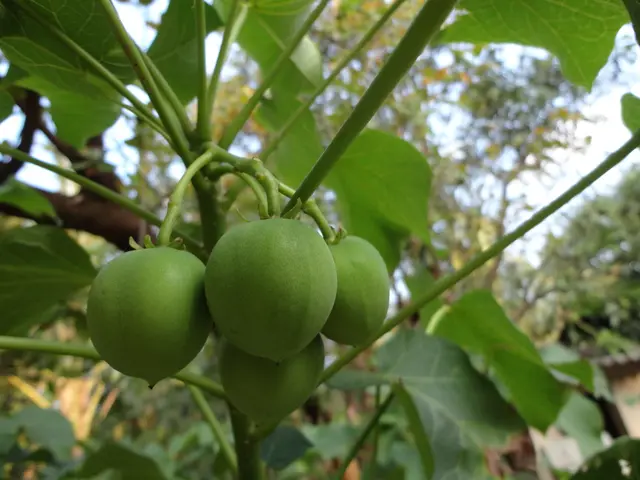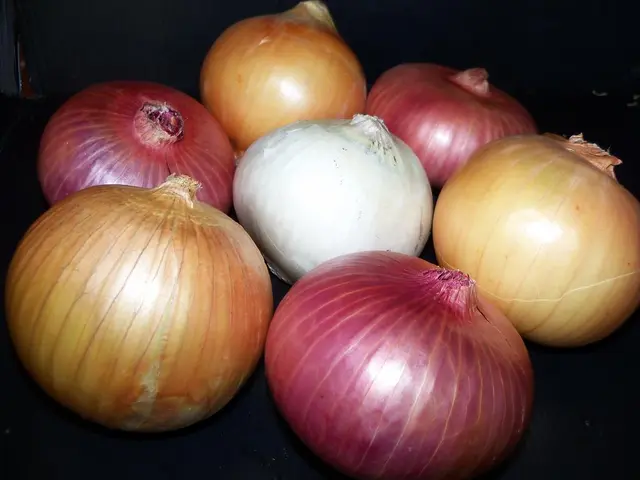Top 10 Resilient Perennials Thriving After Autumn Sowing
Fall's the finest season for planting perennials that'll brighten up your garden in the following spring. Planting them in fall gives their roots a chance to strengthen before winter's cold sets in, ensuring they're ready to bloom as soon as spring arrives. Here's a list of some excellent fall perennials, along with handy tips on taking care of them. Let's give your fall garden a makeover with these fabulous floral gems!
Spectacular Perennials for Your Fall Planting Spree
1. Hellebore
Hellebores, with their early winter to early spring blooms, are all about elegance. These lovelies produce cup-shaped flowers in various hues, such as white, pink, and purple. They're celebrated for their longevity and their charming blooms.
Why it thrives in fall: Fall planting provides Hellebores with time to establish their roots before the harsh winter. The cooler temperatures and increased moisture in the soil during fall make them feel at home and help them settle in comfortably, ensuring they're ready to bloom when the weather warms up again.
Tips: Plant Hellebores in well-drained soil in a location receiving partial shade. They prefer a sheltered spot to protect them from strong winds. Water the soil regularly to keep it moist but avoid waterlogging, and add a layer of mulch to help retain moisture and protect the roots. Plant them in early fall to give them ample time to establish.
2. Coral Bells (Heuchera)
Coral Bells capture attention with their vibrant foliage, available in various shades of green, purple, and even silver. They produce delicate bell-shaped flowers that rise above the foliage on tall stems, adding a vertical element to your garden.
Why it blossoms in fall: Fall planting helps Coral Bells endure the colder months. The moderate temperatures and reliable moisture during fall provide optimal conditions for their establishment.
Tips: Coral Bells are not heavy feeders; a slow-release fertilizer applied in early spring is more than enough to support healthy growth and ample blooms.
3. Mini Daffodils
Mini Daffodils are tiny charmers, blooming early spring with their bright yellow flowers. These dainty varieties are perfect for borders, containers, and rock gardens, spreading sunshine around.
Why it grows in fall: Planting Mini Daffodils in the fall allows them to establish strong roots before winter. The cooler fall temperatures and moist soil conditions provide the perfect environment for their growth, enabling them to bloom beautifully in early spring.
Tips: Plant Mini Daffodils in well-drained soil in a sunny spot (full sun to partial shade). To care for them in the fall, water them regularly and add a layer of mulch to protect the bulbs from freezing temperatures. Plant the bulbs in early fall, giving them enough time to develop roots.
4. Coneflowers (Echinacea)
Coneflowers are well-known for their daisy-like flowers with conspicuous cones. They come in various colors, including pink, purple, and white. These beauties are loved by bees, butterflies, and other pollinators.
Why they flourish in fall: Coneflowers benefit from fall planting as the consistent moisture and cool temperatures during fall create the ideal environment for their initial growth phase.
Tips: Plant Coneflowers in well-drained, sunny soil. Water them regularly during the initial stages and mulch around the plants to conserve moisture and protect the roots. Plant them in mid to late fall for best results.
5. Shasta Daisies
Shasta Daisies are classic perennials, with large, white daisy-like flowers and bright yellow centers. They bloom from early summer to fall and attract pollinators to your garden.
Why it thrives in fall: Fall planting allows Shasta Daisies to thrive and produce plentiful blooms the following summer. The moderate fall temperatures and increased soil moisture support their growth and establishment.
Tips: Space the Shasta Daisy plants about 1 to 2 feet apart to ensure proper air circulation and reduced risk of fungal diseases. When planting, ensure the crown (where the stem meets the roots) is at soil level. Planting too deep can hinder their growth.
6. Black-Eyed Susan (Rudbeckia hirta)
Black-Eyed Susans impress with their golden yellow petals surrounding dark brown centers. They bloom from mid-summer to fall and draw butterflies to your garden.
Why it succeeds in fall: Planting Black-Eyed Susans in fall gives them a head start for the next growing season. The cooler temperatures and consistent moisture during fall help them establish their roots more effectively, preparing them for vigorous growth in the spring.
Tips: Plant Black-Eyed Susans in early to mid-fall to give them ample time to establish their root systems before the ground freezes. This timing ensures they are well-prepared to thrive in the spring.
Adding a slow-release, balanced fertilizer during planting can provide essential nutrients supporting the growth of Black-Eyed Susans. Avoid high-nitrogen fertilizers as they encourage excessive foliage at the expense of root development.
7. Russian Sage (Perovskia)
Russian Sage catches the eye with its tall, airy spikes of blue flowers and silvery-gray foliage. It blooms from late summer to early fall and draws pollinators to your garden.
Why it thrives in fall: Russian Sage prefers slightly alkaline soil. If your soil is acidic, consider adding lime to raise the pH level to a more suitable range. Ensure the plant is planted in a location receiving full sun exposure (at least 6-8 hours of direct sunlight daily). Water the plant thoroughly after planting to settle the soil and eliminate air pockets around the roots.
Tips: Russian Sage requires well-drained soil and full sun exposure. Water it regularly during the initial growth phase; once established, it becomes drought-tolerant. Mulch around the base to help retain soil moisture and protect the roots. Plant it in early to mid-fall for the best results.
8. Parrot Tulips
Parrot Tulips are unmissable with their flamboyant, fringed petals in vivid colors such as red, yellow, and orange. These bewitching perennials add a touch of drama and elegance to spring gardens.
Why it blooms in fall: Planting Parrot Tulips in the fall ensures they have enough time to establish strong roots before winter. The cool temperatures and moist soil conditions of fall provide the ideal environment for these bulbs to develop, resulting in spectacular blooms in the spring.
Tips: Plant Parrot Tulip bulbs in well-drained soil in a sunny location. Water them well after planting and add a layer of mulch to protect the bulbs from freezing temperatures. Plant the bulbs in mid to late fall for the best bloom results.
9. Schubertii Allium
Schubertii Allium boasts large spherical flower heads composed of tiny star-shaped blossoms. With their unique appearance, they add a whimsical touch to gardens.
Why it succeeds in fall: Fall planting allows Schubertii Allium to establish strong roots before winter. The cooler fall temperatures and increased moisture support their initial growth phase.
Tips: Mulch around the bulbs to retain moisture and protect them from extreme cold. Plant them in early to mid-fall for optimal growth.
10. Crown Imperial
Crown Imperials are regal perennials, with tall stems adorned with clusters of bell-shaped flowers in shades of red, orange, and yellow. Their unique appearance adds a touch of sophistication to any garden.
Why it thrives in fall: Fall planting gives Crown Imperials ample time to establish their roots before winter. The consistent fall temperatures and reliable soil moisture provide the perfect conditions for their growth, ensuring they are ready to bloom in late spring.
Tips: Always buy and plant crown imperial bulbs as early as possible in the autumn. It's essential for them to develop strong roots before winter arrives to ensure they flower well. Plant the bulbs in a location receiving full sun, as they prefer well-drained soil. Space the bulbs about 6-8 inches apart. This distance helps protect them from frost and offers enough soil insulation during winter.
Conclusion
Planting perennials in the fall is a clever gardening strategy that results in stunning, healthy plants come springtime. From the elegant Hellebore to the regal Crown Imperial, these perennials not only enrich the beauty of your garden but also attract pollinators and thrive under various conditions. With the tips provided, you can ensure your fall-planted perennials flourish and bring joy to your garden for years to come. Happy planting!
By integrating fall-loving perennials into your home-and-garden lifestyle, you're creating a garden that excels during autumn and bursts forth with color in the spring. Instead of relaxing your gardening routine during the cooler season, take advantage of the favorable conditions and transform your garden with these fabulous fall perennials.
Whether you opt for the aristocratic Crown Imperial, the airy Russian Sage, or the cheerful Black-Eyed Susan, each of these splendid plants offers its own charm and complements your garden's overall ambiance. By understanding their requirements, such as planting, watering, and soil conditions, you can cultivate a stunning garden that reflects your love for home-and-garden and gardening all year round.








